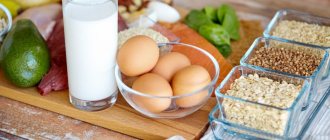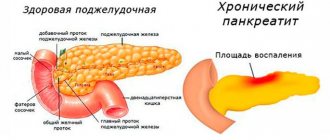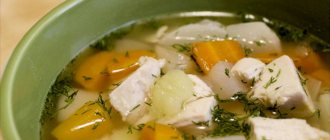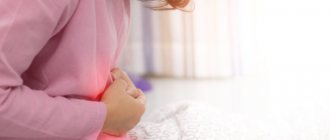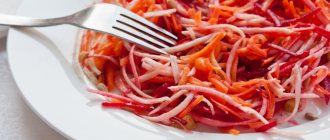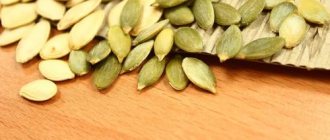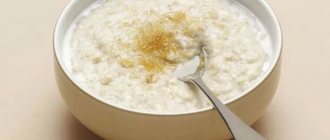Inflammation of the pancreas is considered a dangerous digestive disease, which causes severe symptoms in the patient. Acute pain, vomiting, impaired digestion of food knocks a person out of his usual way of life and leaves him bedridden for some time with torment.
In order to somehow prevent relapses of the disease, doctors strongly advise adhering to a strict diet. But not all patients know the full list of permitted and prohibited products for pancreatitis, which leads to trial and error, and this is quite often fraught with complications from the pancreas.
Therefore, diet table No. 5 and menu for pancreatitis for a week will help you write out a complete diet that will allow the body to receive a full range of useful and nutritious substances, without putting a heavy load on the glandular tissue.
Manuil Pevzner, a well-known therapist, nutritionist and gastroenterologist in the Soviet years, studied problems associated with digestion for a long time, and eventually became the author of 15 tables, which were later recognized as the best diets for various diseases.
Today, the 5p diet for pancreatitis and cholecystitis is considered an indispensable foundation for compiling daily diets. The 5p diet allows you to easily schedule a menu for every day.
Features of using diet 5
It is important to know that after diagnosing acute pancreatitis, Diet 5 is prescribed only after all symptoms of relapse have been eliminated. During an attack, doctors strongly advise completely abstaining from any food intake, with the exception of mineral water, for example, Borjomi. Only after 3-4 days after the acute stage, when vomiting stops and swelling of the pancreas decreases, can you begin to try the first food.
Diet table 5 menu for pancreatitis for a week after relapse is drawn up together with the doctor. The main thing after a complication is not to provoke another attack, so you need to take food in very small portions and only from the prescribed menu.
Diet number 5 for pancreatitis should not be limited to the period while the patient feels some discomfort in the esophagus. After an exacerbation, you need to maintain a strictly gentle regimen for 8 months. But this does not mean that as soon as the period has expired, dietary products can be relegated to the background; the regime must be followed constantly, because the disease does not go away, but only subsides.
With chronic pancreatitis, you can afford a few goodies, but 90% of the table should consist of dishes from the Pevzner diet. Chronic pancreatitis, under any favorable conditions, quickly transforms into an acute stage and the patient will have to go through all the painful symptoms and start treatment all over again.
Characteristics of the treatment table
Nutrition for acute pancreatitis is based on the treatment table 5p. The patient's diet is as gentle as possible. This diet option significantly limits the patient's intake of fats and carbohydrates. During the day, you are allowed to consume no more than 30 grams of pure sugar.
The diet is based on protein foods. The daily protein intake is 100...120 grams. At the same time, at least 50% should be animal proteins. Daily caloric intake – 1800 Kcal. The salt norm is no more than 8 grams per day.
Advice! You need to salt ready-made dishes not during the cooking process, but directly when serving, i.e. you need to add salt to the served portion of food. This will help you control your salt intake.
You need to eat in small portions. The patient should receive food every two to three hours in small portions. An important point is compliance with the drinking regime: during the day you need to drink at least 1.5 liters of clean water. Compotes and soups should not be counted. The 5P diet is quite strict. It completely excludes salted, pickled, fried and canned foods.
Any carbonated, alcoholic drinks and black coffee are strictly prohibited. To stop the production of pancreatic juice, foods that can cause chemical and mechanical irritation of the mucous membrane of the stomach, gallbladder and pancreas are excluded from the diet.
Foods that are prohibited in diet No. 5
To create the correct menu for a week with pancreatitis, you need to have knowledge about foods that should never be included in the patient’s diet. The basic rule for selecting products is the exclusion of fatty, hard, hot and spicy ingredients, such as:
- Fatty meat and game. The meat of duck, goose, and pork should not be eaten in case of pancreatitis; this list also includes the meat of any game other than duck, hare or wild boar. This meat contains a lot of animal fat, for the processing of which the pancreas needs to produce an increased amount of enzymes.
- Fatty fish. Varieties of fish with a high fat content also cause an aggravating effect on the pancreas, stomach and duodenum. You should avoid trout, salmon, catfish, pangasius, herring, mackerel and capelin.
- Egg yolks.
- Some dairy products. You should not eat dairy products in their natural form, that is, drink raw milk, sour cream, whey, full-fat cottage cheese or cream. Although milk is considered an irreplaceable source of protein, the percentage of fat burdens the functioning of the digestive system.
- Some types of cereals. For example, millet and pearl barley cleanse the body of toxins well, but with pancreatitis they carry a huge burden. This also applies to corn grits, large wheat and legumes. Pasta in your diet should be strictly controlled; you are allowed to add a little noodles to the soup, but do not eat them as a separate dish.
- Raw vegetables. Almost all raw vegetables are strictly contraindicated for pancreatitis, although the basis of nutrition should be foods with vitamins and minerals, but this does not apply to the diet for inflammation of the pancreas. Also, under no circumstances should you eat pickled, salted or pickled vegetables.
- Sweets. Cakes, soufflés, sweets, pastries, chocolate should be removed from diet 5. It is also not recommended to drink too sweet tea, honey, or jam.
- Flour products. Diet 5 for pancreatitis should not contain fresh baked goods, especially those made from white flour with the addition of nuts, raisins, candied fruits, poppy seeds, and dried apricots. Freshly baked flour products contain too much starch.
- Beverages. Store-bought carbonated sweet drinks like Fanta, Coca-Cola, Duchess, apart from excess sugar and carbon dioxide, do not provide any benefit to the body. To reduce irritation of the stomach and the entire digestive system, you need to minimize their consumption. You should also avoid strong tea, coffee and cappuccino.
results
The most important result achieved with this diet is restoration of the functioning of the gastrointestinal tract and improvement of well-being. But in addition to the therapeutic effect, this diet can be the most gentle way to lose weight, since it is balanced in the ratio of substances and does not cause stress in the body. The extra pounds go away quite slowly, but the general condition of the body improves and then the weight does not return, as happens with extreme weight loss.
It is important that a person who eats strictly within the framework of table No. 5 loses weight without starving. For each month, with such nutrition, from 3 to 6 kilograms are lost.
Stay up to date
Gallstone disease: why is it dangerous and how to treat it?
But since this diet is primarily therapeutic, you should not prescribe it to yourself, without consulting a doctor, just for the sake of losing weight. The fact is that “Table No. 5” obliges you to reduce your fat intake. If you have problems with the biliary system, this is what you need. But in general, our body needs fats, because... they perform many important functions. Their consumption can be reduced to a reasonable limit, but not completely eliminated.
For weight loss, not only diet is important, but an integrated approach. Nutritionists warn that unnecessary food restrictions that are not justified by health reasons can trigger an eating disorder. And against the background of a low-calorie diet (less than 800 kcal per day), the risk of gallstones also increases.
Foods that should be included in diet No. 5
Diet 5a is universal in that it is suitable for therapeutic nutrition for both adults and children. The basis should include only healthy and easily digestible foods:
- Chicken, turkey, rabbit or beef. This meat is considered dietary, it is easy for the stomach to digest and it carries the necessary protein to maintain a healthy body.
- Fish is a source of calcium, but with pancreatitis it is important that it be lean, that is, with a minimum amount of fat. These species include pike, pike perch, pollock, hake, and notothenia.
- Low-fat cottage cheese, kefir, yogurt. It is better to buy dairy products with a certain fat content in the store, because homemade preparation does not guarantee a certain amount of fat. But you should pay attention to expiration dates, since expired dairy products can do much more harm than good from fresh ones.
- Porridge. Among the cereals that should be included in table number 5 are rice and buckwheat, oatmeal, and semolina. They can be combined with each other. You can also add a small amount of butter.
- Soups. The main thing in diet five soups is to prepare dishes with a light broth, that is, rich liquids should never be used due to the large amount of gelatin. An excellent option would be rice soup, milk soup with pasta, buckwheat or green peas.
- Vegetables. Almost all vegetables can be consumed on diet 5b, except cabbage, garlic, and pepper. But they must undergo heat treatment. Only boiled potatoes, zucchini, carrots, onions, pumpkin, and beets can be eaten.
- Fruits are also best consumed in the form of compotes and mousses. Sweet varieties of apples, apricots, cherry plums, raspberries, and blueberries are allowed. But do not lean on berries with small grains, such as strawberries, raspberries, currants, and gooseberries.
- Stale bread and diet cookies. They take only yesterday's bread, preferably from gray varieties of wheat without bran. To somehow sweeten the tea party, they use biscuits.
Recipes for every day
Recipes for dietary dishes have some differences from standard options for their preparation. Some ingredients are excluded. The dishes recommended by the 5p Diet are prepared only by stewing, boiling, steaming and baking. The amount of salt, sugar and vegetable oil should be limited.
Borsch:
- To prepare borscht, you will need half a head of Chinese cabbage, one tomato, beets, carrots, three potatoes, a tablespoon of vegetable oil, water, and salt.
- You can add boiled beef to the ingredients, but not meat broth.
- Grind all ingredients and add water.
- The cooking process takes an average of thirty minutes.
- Before serving, you can add a small amount of parsley to the borscht.
Combined vegetable soup:
- To prepare the soup you will need one carrot, three potatoes, a small zucchini, one tomato, a tablespoon of vegetable oil, salt, water.
- Cut all vegetables into cubes (carrots can be grated).
- Pour water over the vegetable stock and add salt.
- The cooking process takes approximately thirty minutes.
Pumpkin cream soup:
When the disease goes into remission, you can slightly diversify pumpkin recipes. To prepare cream soup you will need 500 g of pumpkin pulp, 500 ml of milk, 25 g of cream, salt, a tablespoon of vegetable oil.- Grate the pumpkin pulp or chop it in other ways.
- Pour milk into the pan, add pumpkin and salt.
- The soup is crushed with a blender.
- The workpiece must be boiled again for 5 minutes (can be diluted with cream or milk).
- Dairy products for making soup should be low in fat.
- You can serve the dish with dried bread cubes.
Chicken dumplings:
- To prepare the quenelle you will need 500 g of minced chicken, 100 g of rice, butter, one carrot, salt.
- Pre-boil the rice and carrots (grate the carrots).
- All ingredients are combined into a homogeneous mass (you can add egg white).
- You can cook quenelles by baking or in a double boiler.
- Cooking time depends on the chosen method.
Basics of cooking from the table 5
Table 5 has its own special rules for preparing all dishes that must be followed, otherwise the effect will not be achieved:
- All products are steamed or stewed. Omelettes, meat, and vegetables cannot be fried, only cooked in a slow cooker or boiled in a pan with water, and vinegar must not be added.
- Grind everything thoroughly. The smaller the ingredients in a dish, the easier it will be digested by the stomach. This is especially useful for children whose digestive systems are not strong enough to handle large pieces.
Remission: softer diet
After the period of exacerbation has passed, patients are transferred to a less restrictive diet. Stewed and oven-baked dishes are added.
This diet includes a high protein content, a normal amount of fats and complex carbohydrates, but “fast”, easily digestible carbohydrates (sugar, honey, flour products) are severely limited. Dietary supplements containing methionine, vitamins B1, B12, choline, lecithin, etc. are recommended. The diet is enriched with dietary fiber, ascorbic acid, and calcium.
Chemical composition:
- proteins: 110-120 g, including animals 45-50 g;
- fats: 80-90 g, including vegetable fats 30 g;
- carbohydrates: 300-350 g,
- dietary fiber (fiber): 25-30 g.
Energy value 2080–2690 kcal.
The principles of dietary nutrition during the remission stage should be followed for as long as possible, ideally throughout life.
How to create a menu for the week
To independently create a daily diet, you need to know the calorie intake per person per day. For an adult with a digestive disorder, the daily norm of kilocalories will be 2500-2600. A menu is prepared for 7 days, using a table of caloric content of foods.
Recipes for dishes should only contain those ingredients that are allowed at table 5. It is also worth considering that you should not use spices and flavorings, since they only irritate the already damaged pancreas. Diet for pancreatitis of the pancreas, an example menu for each patient will be individual.
The diet should be selected taking into account the characteristics of the body. Not all people can properly digest dairy products, certain types of cereals or vegetables. There is no need to torture yourself if you don’t like a product or if it’s disgusting to you. You just have to find a worthy analogue among other dishes.
Food should be treated like goodies, even if it is not exactly what the patient is used to. In the fight against pancreatitis, the main thing is consistency, because you can’t go on a diet for a long time, and then break loose and eat everything - this will definitely end in hellish pain and relapse.
Features of nutrition for pancreatitis
Diet for pancreatitis, Table 5
For pancreatic diseases and syndromes, nutritionists prescribe a therapeutic diet for pancreatitis Table 5.
In addition to this diet, M.I. Pevzner developed another dozen and a half diets intended for patients with various groups of diseases. All his diets have common principles:
- The benefits and harms of specific products are determined by the patient’s health status, and not by concepts of proper nutrition in general.
- The amount of food consumed per day is determined based on its calorie content.
- The diet is developed in such a way as to satisfy the patient’s average daily energy requirement.
- There is no universal therapeutic diet; different foods bring benefit and harm for different diseases.
- Complete exclusion of fats or proteins from the patient’s diet is not allowed and is only temporary.
Pevzner's diets do not meet the principle of easy tolerance (compliance) by the patient, since it was not recognized in Soviet dietetics.
All diets are developed based on rigorous scientific research. A number of Pevzner tables are designed for bedridden patients and are therefore not suitable for more active patients.
All diets, without exception, are of an auxiliary nature, cannot be used as a replacement for drug therapy and are prescribed exclusively on the recommendation of a qualified specialist.
Diet menu option No. 5p when an exacerbation subsides
An approximate menu for a patient with pancreatitis following treatment table 5p is as follows:
- 1st breakfast
: grated porridge with liquid and without oil, diluted tea without sugar or milk jelly; - 2nd breakfast
: a glass of medicinal water or jelly with boiled fruit; - lunch
: viscous soup with oatmeal, ground meat and vegetable puree, uzvar; - afternoon snack
: steamed omelette made from egg whites, a glass of liquid; - dinner
: baked cottage cheese or apple, grated porridge; - 2-3 hours before sleep
: crackers, dry cookies, water.
Fasting days
For diagnosed chronic pancreatitis, nutritionists recommend arranging fasting. On such days, patients eat only one type of food.
One of the options for a fasting day is oatmeal.
For inflammation of the pancreas, you can practice the following one-day mono-diets:
- Oatmeal. You need to boil 200 grams of oatmeal in water. Divide it into 6 parts. During the day you need to drink 400 ml of rosehip decoction.
- Cottage cheese. So, season 600 grams of cottage cheese (low-fat) with sour cream (60 grams). Divide into 4 servings. 400 ml of rosehip decoction are allowed.
- Fruit and curd. Mix prunes (400 grams) and the same amount of low-fat cottage cheese. Eat in 6 servings.
- Rice-compote. Boil 1.5 liters of compote from apples. Cook porridge from 50 grams of rice. Sweeten it a little. Drink compote during the day. Eat porridge in the morning and evening.
- Watermelon. During the day you need to eat 1.5 watermelon pulp (the rind is not taken into account) in five to six doses.
- Pumpkin. Bake 2 kg of pumpkin pulp in the oven. Divide it into 5 steps.
- Apple. Bake 1.5 kg of apples in the oven and eat them the day before.
Physical activity is prohibited these days.
